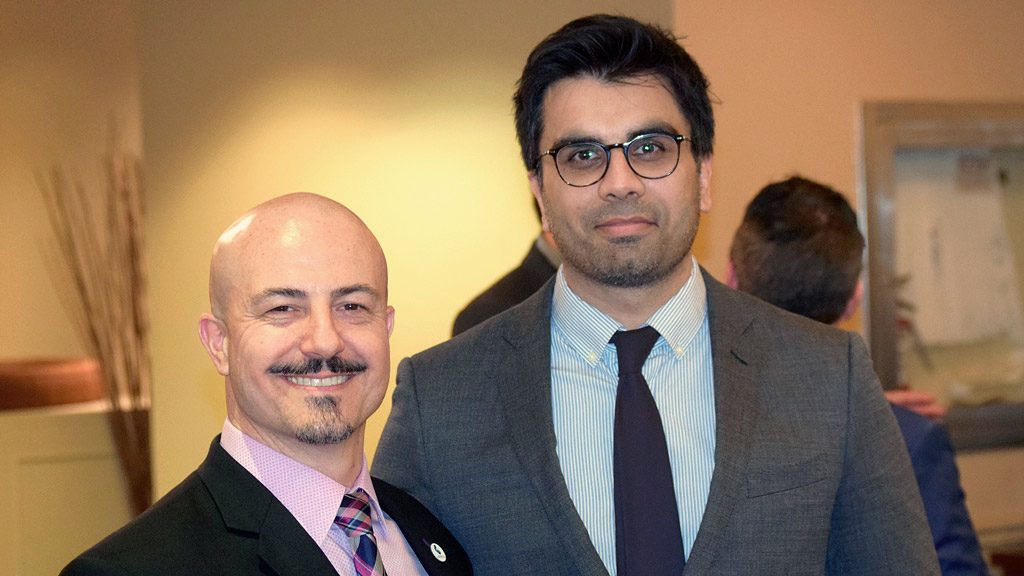A new report prepared for the Ontario Sewer and Watermain Construction Association (OSWCA) has found a hodgepodge of standards among municipalities in cataloguing, inspecting and renewing underground water infrastructure.
It’s a problem that exists despite provincial efforts to document water infrastructure through mandated asset management plans, says the report, and it results in some municipalities being stuck with infrastructure categorized as poor, worse or expired, leaving a water infrastructure gap that has reached worrisome levels.
The report, titled, The State of Ontario’s Water and Wastewater Infrastructure, which was released in March. It served as ammunition for OSWCA members as they visited the offices of MPPs and cabinet ministers during the association’s Queen’s Park lobbying day March 19.
“For us, we sat back and said, ‘wow, why isn’t it standardized?’ ” commented OSWCA executive director Giovanni Cautillo on the extent to which it was revealed cities have considerably varied practices. “How can you compare apples to apples in infrastructure if you don’t set a baseline?”
The report, written by infrastructure consultant Israr Ahmad, studied 30 mid-sized Ontario municipalities and found 20 per cent of water, wastewater and stormwater linear infrastructure, valued at more than $8 billion, is in poor to very poor condition. Over $1 billion of the infrastructure remains in operation despite being beyond its recommended useful life.
Among municipalities, Chatham-Kent had the highest portion of its water infrastructure in poor or worse condition, including 37 per cent that had expired; Guelph was the only city that actually performed physical testing of pipes, with the rest relying on age to determine when upgrades should be scheduled; and Hamilton was relying on sophisticated acoustic and electromagnetic technologies to assess its high-criticality pipes but on the other hand, has 12 per cent of its sanitary sewers 100 years old.
The report states, “With the combination of climate change, population growth and age all coming together to put pressure on these systems, there must be a major re-prioritization of how this critical underground infrastructure is viewed and managed in order to protect people’s health, property and prevent costs mounting up in future.”
“It is a huge issue around health because a lot of people get sick with poor water,” OSWCA president Larry Taylor commented.
“We have the technology and we have the solutions. We know what has to be done, we just have to work together to make that happen.”
One solution the province is counting on is its asset management program. The government launched its Municipal Infrastructure Investment Initiative in 2012 and its more comprehensive asset management requirements in Bill 6, from 2016.
OSWCA says a better understanding of infrastructure inventory is valuable but still, the lack of standardization across the province means decision-makers are making long-term investment decisions in a climate of major uncertainty.
Some municipalities do not even know the materials that went into manufacturing their older pipes, the report points out.
“Let’s standardize how we grade assets, let’s standardize what prompts us to do conditional assessments,” said Ahmad. “It takes five breaks in some areas before we do an assessment, in others it’s one break.”
The report makes five recommendations: move from age-based to inspection-based planning; make all underground infrastructure a priority; standardize approaches to full-cost recovery; provide transparency on infrastructure state, risk and impacts; and drive best practices in asset management.
“What we are now saying, you now have all of that data,” said Ahmad. “Let’s form a working group, let’s come up with some recommendations and solutions that municipalities can use to continue to elevate their asset management.”
Cautillo and Taylor both said they found a receptive audience in their visits with members of the legislature, including a session with Minister of Infrastructure Bob Chiarelli.
Ahmad’s report notes several recommendations from the Walkerton inquiry have not been implemented and that the July 2013 rainstorm that resulted in flash flooding caused $940 million worth of damage in Toronto alone.
“I hope we don’t need more Walkertons to get to a point where we are all unified and infrastructure underground is just as important in policy matters and debate as the LRT or new hospitals,” said Ahmad.











Recent Comments
comments for this post are closed